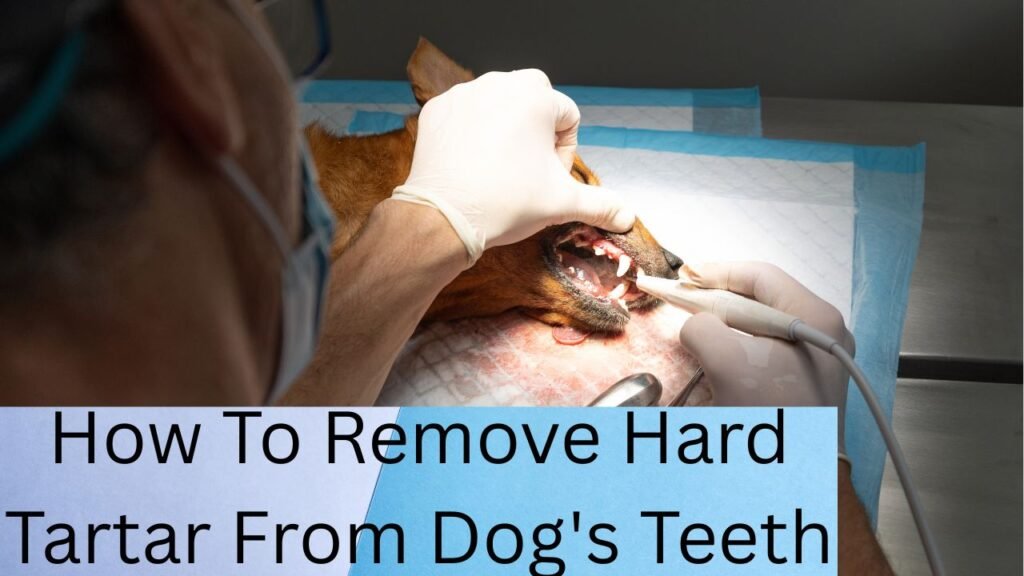Tartar buildup on your dog’s teeth can be a serious issue. Not only can it lead to bad breath and a poor appearance, but it can also contribute to more severe health problems, like gum disease and tooth loss. But here’s the truth: removing hard tartar from your dog’s teeth requires professional intervention. If you’ve been wondering whether there’s a way to do it at home, we’re here to explain why it’s not possible and what you can do to manage plaque and prevent tartar buildup in the future.
Understanding Dog Tartar and Why Removal Requires a Vet
Hard tartar (also known as dental calculus) forms when plaque, the sticky film of bacteria on your dog’s teeth, is not cleaned off regularly. Over time, the plaque hardens into tartar and can only be removed effectively by a professional veterinary dental cleaning.
While you can manage plaque at home to prevent tartar buildup, hard tartar is too firmly attached to the teeth and will not come off with any brushing, dental chews, or at-home methods. Only a veterinarian with specialized tools can properly remove it, preventing potential long-term issues like periodontal disease or tooth decay.

What Happens During Professional Tartar Removal?
If you’re noticing hardened tartar on your dog’s teeth, don’t panic — a veterinary dental cleaning is the solution. Here’s what you can expect from the professional cleaning process:
Step 1: Pre-Anesthetic Exam
Your veterinarian will first examine your dog to ensure they’re healthy enough for the procedure. This may include blood work and a physical exam to assess overall health.
Step 2: Anesthesia
Anesthesia is used to ensure your dog remains calm and still during the procedure. It’s important to prevent discomfort and ensure the safety of your pet while the vet works on the teeth.
Step 3: Ultrasonic Scaling
The primary tool used for tartar removal is an ultrasonic scaler. This high-frequency tool vibrates at a rapid pace, breaking up the hard tartar on the teeth without damaging the enamel. Your vet may also use manual scaling tools to get areas that are hard to reach.
Step 4: Subgingival Cleaning
Tartar below the gum line can only be effectively cleaned by your vet. Subgingival tartar is one of the primary causes of gum disease. If left untreated, it can lead to tooth loss or more serious infections.
Step 5: Post-Cleaning Care
Your vet will ensure that your dog’s teeth are clean and may recommend additional treatments, such as a fluoride treatment to protect enamel. In some cases, severely damaged teeth might require extraction.
By the end of this professional cleaning, your dog’s teeth will be tartar-free and healthier, but regular maintenance will be necessary to avoid future buildup.
How to Prevent Tartar Buildup and Manage Plaque at Home
While professional cleaning is the most effective solution for removing tartar, you can still take important steps to prevent plaque from turning into tartar. Here are some strategies for at-home plaque management:
1. Brushing Your Dog’s Teeth
Brushing is one of the best ways to control plaque. Daily brushing is ideal, but even a few times a week can make a significant difference. Use a dog-specific toothbrush and enzymatic toothpaste to reduce plaque. Avoid human toothpaste, as it can contain harmful ingredients for your dog.
Brushing Tips:
- Use gentle, circular motions.
- Focus on the gum line, where plaque tends to accumulate.
- Introduce brushing gradually by making it a fun, positive experience for your dog. Treats and praise help!
2. Dental Chews and Toys
Dental chews are great for plaque control. They help scrape off plaque while your dog chews. Look for chews with the VOHC (Veterinary Oral Health Council) seal, as they’re proven to reduce tartar.
3. Enzymatic Toothpaste
Enzymatic toothpastes are formulated to break down plaque before it hardens into tartar. While they won’t remove existing tartar, they can significantly reduce plaque buildup.
4. Water Additives
Water additives can be mixed into your dog’s drinking water to help reduce plaque and fight bad breath. They’re a convenient option for dogs who aren’t fans of tooth brushing.
5. Regular Vet Checkups
Visiting the vet regularly ensures any signs of tartar or dental disease are spotted early. During these visits, your vet will also give professional advice on oral care tailored to your dog’s needs.
What Not to Do When Managing Your Dog’s Tartar
While it’s important to take proactive steps, there are also things you should avoid:
- Don’t use human toothpaste: This can be harmful to dogs, especially if swallowed.
- Avoid hard bones or toys: These can cause tooth fractures and aren’t ideal for cleaning teeth.
- Don’t skip vet visits: Even if your dog seems fine, tartar can build up without you noticing.
Preventing Tartar Buildup: It’s About Consistency
Preventing tartar is all about consistency. The best way to ensure your dog maintains healthy teeth is by combining a good oral hygiene routine at home with regular professional dental cleanings.
Diet also plays a role — dry food can help reduce plaque buildup compared to wet food, which tends to stick to the teeth more.
Conclusion:
Hard tartar can’t be removed at home, but you can significantly prevent future tartar buildup by keeping up with regular plaque control and professional cleanings. If you notice visible tartar on your dog’s teeth, don’t wait — schedule a veterinary dental cleaning. Keeping your dog’s teeth clean and healthy will improve their overall well-being and extend their life.
Consult with your vet to find a personalized dental care plan for your dog. After all, your dog’s smile deserves to be bright and healthy!
Find Your Perfect Dentist
Book appointments with top-rated dentists in your area